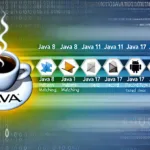Getting to Know AI Concepts
If you’re gearing up for AI interviews, nailing the basics is a must. We’ll break down some essential concepts like deep learning, artificial intelligence (AI), and machine learning and then dive into key machine learning algorithms. Let’s keep it simple and relatable.
Deep Learning, AI, and Machine Learning: What’s the Difference?
Knowing the nuances between deep learning, AI, and machine learning can set you apart in interviews. Here’s the lowdown:
- Artificial Intelligence (AI): Think of AI as the big umbrella. It’s all about making machines that can mimic human behavior. These machines can think, learn, and make decisions on their own (JavaTpoint).
- Machine Learning (ML): ML is like a subset of AI. It teaches machines to learn from data. The emphasis here is on algorithms that let computers make predictions based on data.
- Deep Learning: Picture deep learning as a deeper dive within ML. It uses neural networks with many layers (hence ‘deep’) to analyze complex data. It’s great for tasks like recognizing images and speech.
Key Machine Learning Algorithms: The Essentials
Mastering these algorithms will not only score you points in interviews but also come in handy in real-world projects.
Common Machine Learning Algorithms
Here’s a quick rundown of some popular machine learning algorithms:
- Linear Regression: Predicts continuous outcomes. Think of it as finding a relationship between variables, like the price of a house based on its features.
- Logistic Regression: Despite the name, it’s all about classification. It predicts probabilities, like whether an email is spam or not.
- Decision Trees: Visualize it as a tree where each branch is a decision. It’s good for both classification and regression tasks.
- K-Nearest Neighbors (KNN): A simple, go-to method for classification. It classifies data points based on how close they are to their neighbors.
- Support Vector Machines (SVM): A powerful tool for classification. It finds the best boundary that separates different classes of data.
- Random Forest: An ensemble method using multiple decision trees to improve accuracy. Great for handling complex data.
- Neural Networks: Used heavily in deep learning, these mimic the human brain. They’re used for things like speech and image recognition.
| Algorithm | Type | Example Use |
|---|---|---|
| Linear Regression | Regression | Predicting house prices |
| Logistic Regression | Classification | Spam email detection |
| Decision Trees | Both | Managing customer relationships |
| K-Nearest Neighbors | Classification | Recognizing handwritten digits |
| Support Vector Machines | Classification | Classifying images |
| Random Forest | Both | Predicting equipment failures |
| Neural Networks | Deep Learning | Recognizing faces in photos |
Got curious about digging deeper? Check out our machine learning basics article for more.
Why it Matters
Grasping these concepts and algorithms prepares you for those tough AI interview questions and enriches your understanding of artificial intelligence programming. Understanding AI isn’t just about tech; it’s about using human-like thinking to solve real problems.
So, roll up those sleeves, dive into these concepts, and get ready to ace that interview!
Getting a Grip on Learning Techniques
Want to nail AI and machine learning? Then you’ve gotta understand the different ways machines learn. Let’s chat about the basics: supervised learning and unsupervised learning.
Supervised vs. Unsupervised Learning
One of the top questions in machine learning interviews is defining the difference between supervised and unsupervised learning (Coursera). Knowing these concepts is key for acing AI interviews and mastering the basics of machine learning.
Supervised Learning:
Imagine this, supervised learning is like having a teacher. You’ve got labeled data, so the algorithm learns from examples that already have correct answers.
Example: Predicting house prices based on features like size, location, and number of bedrooms.
| Feature | House Price |
|---|---|
| 2000 sq ft, 3BR, NY | $500,000 |
| 1500 sq ft, 2BR, CA | $350,000 |
Unsupervised Learning:
Unsupervised learning is like exploring without a map. You have unlabeled data, and the algorithm tries to figure out patterns or groupings on its own.
Example: Clustering customers by their buying habits.
| Customer ID | Purchases (Q1-Q4) |
|---|---|
| C001 | [10, 15, 20, 25] |
| C002 | [5, 10, 15, 20] |
Check out more about this in our deep dive on AI algorithms.
Beating Overfitting in Machine Learning
Overfitting is a common issue you’ll hit while gearing up for those AI interviews. It’s when your model aces the training set but bombs on new data (Coursera).
What’s Overfitting?
Overfitting is like a student who memorizes their notes but can’t handle new questions. The model does great on training data but fails on fresh data.
Example:
| Model | Training Accuracy | Test Accuracy |
|---|---|---|
| Model A (Overfit) | 100% | 60% |
| Model B (Good Fit) | 85% | 80% |
Fixing Overfitting:
- More Data: Feeding your model with more data helps it generalize better.
- Regularization: Techniques like L1 or L2 regularization keep the model’s parameters in check.
- Cross-Validation: Splitting your data into multiple sets to ensure performance across different datasets.
- Pruning: Simplifying decision trees to avoid over-complicating your model.
Get good at these techniques to build models that aren’t just book smart but street smart too.
Need to get prepped? Check out our AI certification programs and explore different AI coding languages, like Python, which is the go-to for AI work. And don’t miss our guide on AI in Python.
Get Ready to Dive into AI
We’re about to take a closer look at AI’s basics and see how Python plays a key role in developing it.
What is Artificial Intelligence?
So, what’s the deal with Artificial Intelligence (AI)? Think of it as a part of computer science that aims to create machines that act human-like. These smart systems can think, learn from data, and make decisions on their own, eliminating the need for constant human supervision. (JavaTpoint).
Here’s a breakdown of some core stuff in AI:
- Machine Learning (ML): Let’s machines learn from data and make predictions.
- Natural Language Processing (NLP): Enables machines to understand and talk in human language (natural language processing techniques).
- Robotics: Builds and programs robots to work on their own.
- Expert Systems: They tap into human expertise to give advice or make decisions in specific fields.
AI’s main goal is to create machines that can think and act like us, handling tough problems that require logic and problem-solving skills (JavaTpoint).
Learn more about AI basics by checking out our piece on artificial intelligence programming.
Python and AI Development
Why is Python the go-to language for AI? Simply put, it’s user-friendly and comes packed with handy libraries (JavaTpoint). These libraries make building AI apps a breeze.
Here are some must-know Python libraries for AI:
- NumPy: Handles large datasets and complex math operations.
- Pandas: Great for data manipulation and analysis.
- Scikit-Learn: Easy-to-use tools for machine learning and data analysis.
- TensorFlow: Open-source library for deep learning with data flow graphs.
- Keras: High-level neural networks API, sitting on top of TensorFlow.
| Python Library | What It Does |
|---|---|
| NumPy | Array and matrix operations |
| Pandas | Data handling |
| Scikit-Learn | Machine learning tools |
| TensorFlow | Deep learning framework |
| Keras | High-level neural networks |
Python’s straightforward syntax makes it perfect for both newbies and seasoned pros. Plus, there’s a huge community out there for support.
If you’re new to AI in Python, or just looking to up your game, check out our guide on ai in python.
By nailing the basics of AI and harnessing Python, you can tackle complex [ai interview questions] and create mind-blowing AI projects. Dive deeper with our resources on ai software development and ai algorithms.
Learning Techniques You Need to Know
Time to look at some unique ways AI can learn new tricks! We’ll check out reinforcement learning and fuzzy logic – two really cool methods to make our machines smarter.
Reinforcement Learning Basics
So, what’s the deal with reinforcement learning (RL)? Think of it like training a dog but without the treats. In RL, an agent learns by messing around in its environment. Unlike supervised learning, where you need to hold its hand with labeled data, RL thrives on trial and error. The agent makes a move, sees what happens, and gets a thumbs-up or down.
- Agent: Think of it as the curious learner. Maybe it’s a robot.
- Environment: The sandbox where the agent plays around. Like a maze for our robot.
- State: The agent’s current status. Where’s the robot in the maze?
- Action: What’s our agent gonna do next? Move forward maybe.
- Reward: The high-five for doing something right. +1 for moving in the right direction.
The aim? Rack up as many of those high-fives (rewards) as possible over time. Picture that robot trying to find its way out of a maze. Here’s a quick cheat-sheet:
| What? | What’s it mean? | Example |
|---|---|---|
| Agent | The learner | Our Robot |
| Environment | The sandbox | The Maze |
| State | Current status | Robot’s location |
| Action | Next move | Move forward |
| Reward | Feedback | +1 for going right |
This approach matters because it’s behind some seriously cool stuff, like game-playing AI and those recommendation engines that know you better than your friends.
Want to test out some RL magic yourself? Check out artificial intelligence programming and dive into those ai algorithms.
Fuzzy Logic in AI
Now, let’s get fuzzy! No, not the sweater kind. Fuzzy logic mimics how humans think when stuff isn’t black and white. Instead of strict yes or no answers, it deals with maybe’s.
Imagine trying to explain how hot it is. Instead of a plain number, we tend to say “warm” or “steaming hot.” Fuzzy logic gets this vagueness and rolls with it.
- Fuzzy Sets: Classify stuff in terms of maybes.
- Membership Functions: Say how much something belongs in a set.
- Fuzzy Rules: Those handy “if-then” nuggets of wisdom.
Let’s put this into a table to make sense of it:
| Thing | Value | Degree of Truth |
|---|---|---|
| Temperature | 75°F | 0.5 (“Warm”) |
| Security Level | 85% | 0.7 (“High”) |
| Battery Status | 40% | 0.4 (“Low”) |
Fuzzy logic shines in stuff like control systems, where you need to make sense of messy data. Think about an air conditioner deciding how hard to work based on room temp, humidity, and how crowded it is.
You might be asked in an interview to cook up an algorithm using fuzzy logic for complex decisions. Brush up with ai software development and tinker with ai in python.
Getting a handle on these techniques broadens your AI know-how and preps you for those tricky AI interview questions. Off you go, future AI whiz!
Rocking Your Machine Learning Interview
So, you’re getting ready for that big machine learning interview. Don’t worry, I’ve got your back. With a little prep, you’ll be ready to dazzle them.
Wrangling Data Like a Pro
Data handling’s a hot topic in these interviews. Here’s what you need to know:
Exploratory Data Analysis (EDA): Start by giving the data a good look. Think of it like visiting a new city—check out the landmarks and spot anything weird. This means crunching some numbers, plotting some graphs, and spotting outliers.
Data Cleanup Tactics:
- Missing Data: Talk about your go-to moves like mean or median imputation, or fancier stuff like K-Nearest Neighbors (KNN) to fill in the blanks.
- Corrupted Data: Explain how you decide what’s trash and how to fix it, using some brains—your own or a machine’s.
- Imputation Methods: Depending on the mess, you might toss some data or fill it in with smart guesses.
Here’s a cheat sheet:
| Problem | Fix It | How It Works |
|---|---|---|
| Missing Data | Mean/Median Imputation | Plugging gaps with averages |
| Corrupted Data | Anomaly Detection | Spotting and fixing oddball entries |
| Outliers | Clipping/Capping | Toning down extreme values |
For the nitty gritty, check out our machine learning basics section.
Typical Interview Questions You’ll Face
Knowing what’s coming can give you a real edge. Here’s a rundown of the usual suspects:
1. Supervised vs Unsupervised Learning
This one’s all about the basics.
- Supervised Learning: Explain that it’s like teaching a dog new tricks using treats (labeled data). Techniques include linear regression, decision trees, and SVM.
- Unsupervised Learning: It’s more like herd behavior – finding patterns in a crowd (unlabeled data). Techniques here include clustering (like K-means) and association rules.
2. Handling Overfitting in Models
Here’s where you show how to keep your models from being too much of a suck-up to the training data.
- Overfitting: It’s like acing practice tests but bombing the finals.
- Fix It: Mention cross-validation, tree pruning, regularization (L1, L2), and picking simpler models.
- Story Time: Share a time you tackled overfitting like a champ.
3. What Are Support Vectors in SVM?
Get specific with this one.
- Support Vectors: These are like the teachers’ pets, closest to the decision boundary. They’re key to defining the hyperplane in SVM.
- Why Care?: Because they ensure the margin between classes is maximized, keeping decisions sharp.
For more on algorithms, visit our ai algorithms guide.
4. Why is Python a Big Deal in AI?
Show them you know your tools.
- Versatility: Talk about its Swiss Army knife-like libraries (TensorFlow, Keras, PyTorch).
- Community Galore: Point out the massive support and resources for problem-solving.
- Readability: Python’s like reading plain English, making teamwork a breeze.
Dive deeper on this in our ai in python page.
Nail these points, and you’ll be well on your way to turning those interviewers into fans. Good luck!
Nail Your Coding Interviews
Prepping for coding interviews, especially those heavy on algorithmic challenges, can feel like trying to solve a Rubik’s cube blindfolded. But with the right game plan, you’ll not only survive but thrive.
Killer Strategies for Algorithmic Coding Interviews
- Brush Up Basics: Don’t sleep on the fundamentals. Go over data structures like arrays, linked lists, and trees, as well as algorithms for sorting and searching. This is your bread and butter.
- Practice On Coding Platforms: Websites like LeetCode and HackerRank are goldmines. They have a buffet of problems that’ll sharpen your problem-solving chops (freeCodeCamp).
- Spot The Patterns: Recognize frequently recurring patterns. For example, recursion is your best friend when tackling tree problems. Break the big problem into bite-sized sub-problems (freeCodeCamp).
- Polish Your Solutions: Don’t settle for the brute-force approach. A smarter, more efficient solution will always outshine. Using a Map, for instance, can cut down your solution’s time complexity from O(n²) to O(n) (Medium).
| Strategy | Description |
|---|---|
| Brush Up Basics | Review data structures, algorithms, and complexity analysis. |
| Practice On Coding Platforms | Work on problems from LeetCode and HackerRank. |
| Spot The Patterns | Identify common algorithms and recursive solutions. |
| Polish Solutions | Aim for optimal time complexity (e.g., using a Map). |
Problem-Solving Techniques to Ace Your Interview
- Pre-Process Data: When dealing with massive datasets, pre-process to make your life easier. For example, sorting files by CustomerId and then by PageId sets you up for quick searches and merges (Medium).
- Two-Pointer Technique: This is clutch for sorted arrays or linked lists. It lets you glide through two sequences at the same time, making your algorithm swift and efficient.
- Pick the Right Data Structure: Every problem has its weapon of choice. HashMaps, Trees, and Graphs bring different superpowers to the table. A Map can slash the complexity of finding intersections in datasets (Medium).
- Think Scalability: Always ask yourself about the scalability of your solution. An algorithm with an O(n) complexity will usually beat an O(n²) one, especially with bigger datasets.
For more juicy tips, check out our section on problem-solving techniques for coding success.
| Technique | Benefit |
|---|---|
| Pre-Process Data | Makes managing large datasets a breeze. |
| Two-Pointer Technique | Ideal for navigating sorted sequences. |
| Pick the Right Data Structure | Leverage the best structure for the job. |
| Think Scalability | Always prioritize complexity and scalability. |
Coding interviews can feel like fighting a dragon, but with these strategies and techniques in your arsenal, you’ll boost your odds of victory. For more tips and resources, dive into our articles on AI certification programs, AI in Python, and AI algorithms.
Good luck, future coding champ!









